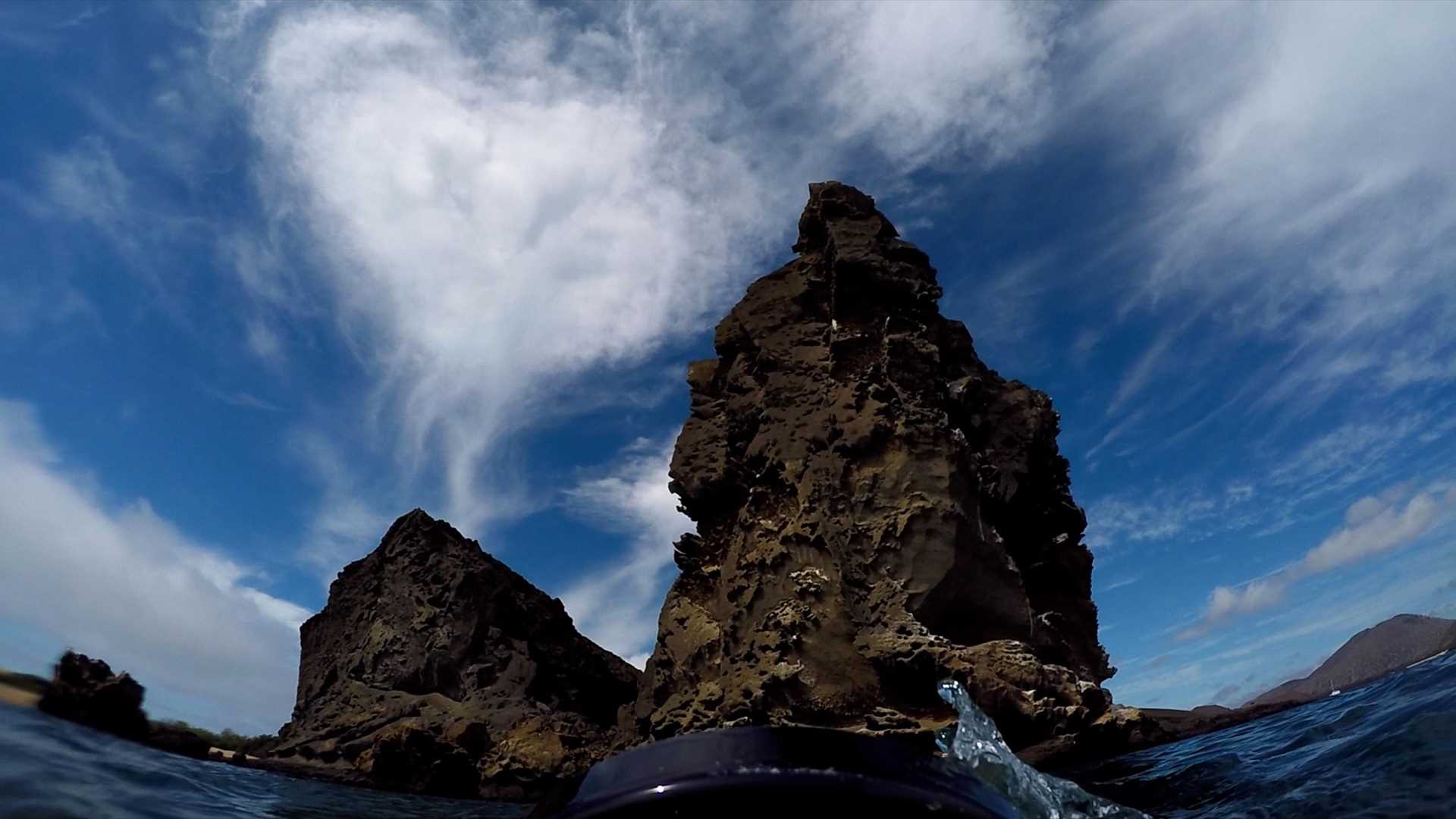As first light emerged low on the eastern horizon, we were already riding our Zodiacs towards our morning landing. Our objective: to reach the summit of Bartolomé. Flat light doesn’t last for long during the early morning, so we made our way up the path with haste to capture the famous postcard-perfect snapshot of Pinnacle Rock. The destination is as wonderful as the volcanic scenery along the way to the top, and we stopped repeatedly to inspect the variety of volcanic products that litter the slopes of the island. Once we had reached the summit we took some time to take in the panorama. The contrast of the historical lava flow the southeastern corner of James Island with the older eroded volcanic ash cones, which are much browner and redder, seems almost painted and borrowed from an artist’s conception of a much younger and volcanically active planet.
After having returned to the National Geographic Endeavour for breakfast, we then landed at a desolate beach at the foot of the hill that we had just earlier climbed. As some guests sat on the soft brown sand to take in the peacefulness of this tranquil beach, others took the opportunity to try the first snorkeling foray into the shallow waters of the bay.
Despite the visibility being somewhat limited, the abundance of marine life was simply overwhelming. Our sightings were outstanding, from huge amounts of red Panamic cushion sea stars to a myriad of differently colored fish that either foraged in the open column of water or grazed on the short green algae on the rocks of the shallows. Personally, I was surprised to have observed several dozen white-tipped reef sharks resting motionlessly in groups between boulders and ledges of the ocean floor.
As we returned for lunch on board our floating home, we sailed out of the bay and a few miles farther south along the eastern shores of Santiago Island. While we were en route, our naturalist Jose Guerrero shared a presentation on the life of Charles Darwin and his famed voyage around the world aboard HMS Beagle. As we left to yet another snorkeling outing at an area known as the Chinese Hat Islet, I wondered what the impact of having access to the underwater world would have had on a young Charles Darwin and to his ideas on the evolution of life on earth.
This time it was not only the fish, rays and sharks that impressed us, but a small group of the endemic Galapagos penguins was spotted right at our snorkeling site. We watched in amusement as the penguins socialized, preened and even hunted for small fish in the shallows. This opportunity was too good to be missed, so we quickly switched into dry clothes and returned aboard our Zodiacs for a photo session with these very photogenic seabirds.
As I write these final words, National Geographic Endeavour heaves its anchor and prepares for the voyage to Genovesa Island. I’m sure that this majestic stronghold of over a million nesting seabirds will be yet another highlight of this amazing week in the Galapagos Archipelago!









